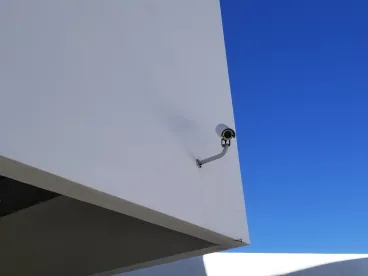In a decision relevant for employers utilizing video surveillance equipment in the workplace and those considering the installation of video cameras, the National Labor Relations Board (NLRB) concluded that an employer created an “unlawful impression of surveillance” by viewing camera footage of an employee, even though the employee was not engaged in protected concerted activity. The case, Stern Produce Company, Inc., 372 NLRB No. 74 (2023), highlights for employers the scrutiny the NLRB is placing on their use of such technology.
Background
In 2015, Stern Produce Company’s (Stern Produce) wholesale distribution and delivery facility in Phoenix, Arizona, became the target of a union organizing campaign to obtain representation rights for Stern Produce drivers and warehouse employees. During the campaign, Stern Produce was alleged to have engaged in multiple unfair labor practices, which resulted in the postponement of the representation election. With respect to those alleged unfair labor practices, the NLRB issued a decision in July 2019 concluding that the company had unlawfully interrogated employees and created the impression that the employees’ union activities were under surveillance.
In August 2019, Stern Produce installed a dual camera system in its fleet of delivery trucks that provided an outside view of the street and an inside view of a truck’s cab. The camera system alerted the company in limited circumstances, including when a driver traveled to an unauthorized residential area, stopped for an extended period, or engaged in harsh braking. While the hearing evidence established that Stern Produce did not routinely review the camera footage outside of those notice events, a driver safety manual required dash cams to “remain on at all times” unless specifically authorized to be turned off or disconnected.
One driver, who supported the organizing effort and participated in an NLRB hearing related to the unfair labor practice charges, covered his camera while on his lunch break. After the driver covered the camera, his supervisor texted him, stating that covering the camera was “against company rules.” The NLRB general counsel’s complaint alleged that this interaction violated the National Labor Relations Act (NLRA) by creating an impression that the driver’s potential union activity was under surveillance.
The Board’s Analysis
Overturning the decision of the administrative law judge, who had concluded that the supervisor’s conduct was nothing other than “‘mere observation’ of activity of the changing workplace of a driver,” the Board agreed with the general counsel and found that the use of the camera and the admonishment of the employee for having covered it had created an unlawful impression of surveillance under the NLRA.
The Board relied on its standard established in Charter Communications, LLC, 366 NLRB No. 46 (2018), to evaluate whether Stern Produce had created an unlawful impression of surveillance. This standard considers “whether, under all of the relevant circumstances, the employer’s statements or other conduct would lead reasonable employees to assume that the employer has placed their union activities under surveillance.” The Board also reasoned that an impression of surveillance is not necessarily created by “mere observation of open union or other protected activity on an employer’s property” but may arise from an employer’s engaging in conduct “out of the ordinary” that creates such an impression.
In analyzing the facts of the case, the Board found that Stern Produce had created an unlawful impression of surveillance when the supervisor observed the camera of the driver—a known union supporter—and without reason instructed him to uncover it. The Board found that none of the circumstances supporting a review of a driver’s camera under company policy were present to justify the supervisor’s observation of the employee. Additionally, the employer had not instructed the driver or maintained a policy that prohibited covering a camera during break time. Though the employee prevented the camera’s intended operation when he covered it, the Board determined that the employee had not violated policies in the company’s driver safety manual by covering the camera. To this point, the Board observed that the safety manual did not address employees covering their cameras during break periods.
Based on the evidence, the Board determined that the employee “would reasonably have interpreted [the supervisor’s] sudden and unusual interest in viewing camera footage from his inward-facing camera when he was stopped for lunch as an indication that [Stern Produce] was surveilling [the driver] for any signs of union activity in violation of Section 8(a)(1).” The Board observed in particular that the driver was a known union supporter and concluded that the supervisor’s observation of the driver was out of the ordinary.
The Board also concluded that it was irrelevant that the driver was not engaged in union activity when the supervisor observed him. In totality, the Board determined that the circumstances supported its conclusion that the employer had created an unlawful impression of surveillance.
Notably, the Board did not dispute that an employer could have legitimate reasons for installing a camera system. In this case, however, the Board found that the employer’s supervisor had not relied upon any aspect of the safety manual when he viewed the driver’s camera and admonished the driver for covering the camera.
Key Takeaways
While this case occurred in a logistics setting, it may be instructive to a wide range of employers that utilize camera technology to monitor the workplace. The Board’s reasoning does not prohibit employers from installing such equipment. Employers utilizing surveillance systems may nevertheless want to consider the NLRA implications when developing policies related to monitoring technology and instructing supervisors on their use.
Moreover, employers may want to consider when and how they will enforce such policies and observe the workplace through cameras. An employer’s use of such technology in a manner that departs from prior practice or is inconsistent with company policy may create liability.




 />i
/>i

